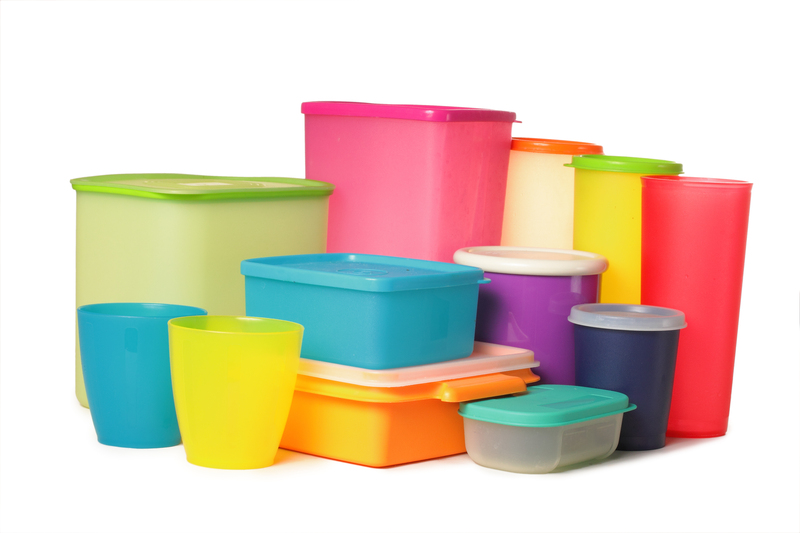Understanding the Importance of Responsible PPE Waste Disposal for Our Health
The global reliance on personal protective equipment (PPE) has grown exponentially, especially following the COVID-19 pandemic. From face masks and gloves to gowns and face shields, PPE acts as a vital barrier against infectious diseases. However, as usage increases, so does waste. Responsible PPE waste disposal is no longer just an environmental concern--it's a crucial public health issue. In this article, we explore why effective PPE waste management matters for our health, the risks associated with improper disposal, and actionable steps each of us can take to make a difference.

What is PPE and Why Is Waste Accumulating?
Personal protective equipment includes a range of products--surgical masks, gloves, respirators, goggles, gowns, and more--that serve as a shield against germs and hazardous substances. With billions around the globe adopting PPE daily, a significant accumulation of single-use products has resulted in a mounting waste crisis. For example, WHO estimates that during the height of the pandemic, nearly 89 million medical masks were required monthly, not including the public's use. This scale of consumption leads to unprecedented PPE waste streams.
How does PPE Waste Affect Our Health?
1. Hazardous Exposure to Pathogens
The primary function of PPE is to block pathogens before they enter our bodies. Once used, however, contaminated PPE--if not disposed of responsibly--can become a source of infection. These items may carry bacteria, viruses, or fungi, and pose a serious biohazard risk:
- Waste collectors, cleaning staff, and even informal waste pickers risk exposure when handling PPE discarded with regular trash.
- Improperly disposed PPE can harbor viable pathogens for hours or even days, endangering anyone who comes into contact with them.
- Poorly managed hospital waste can cause outbreaks of hospital-acquired infections, threatening staff and patients alike.
2. Environmental Contamination and Indirect Health Effects
PPE waste often contains materials like polypropylene, latex, and other plastics that do not biodegrade easily. Left uncollected or dumped in the open, these materials pollute the soil and water sources. The resulting microplastics and toxins can:
- Contaminate water supplies, becoming a conduit for hazardous chemicals and microorganisms.
- Enter the food chain, as aquatic life ingests microplastics, threatening both animal and human health.
- Burning PPE releases toxic substances such as dioxins and furans, potent carcinogens that harm respiratory health for whole communities.
3. Spread of Antimicrobial Resistance
PPE used in healthcare settings often contacts antibiotics or disinfectants. When these items are discarded irresponsibly, they can foster environments in which microbes develop resistance to medication--a growing crisis across the world. Antimicrobial resistance threatens our ability to treat common infections, making responsible PPE waste disposal a priority for global health.
Why Proper PPE Waste Management Is Essential
Protecting Healthcare Workers and Communities
The safety of health workers, waste handlers, and the broader public depends on effective waste segregation and disposal systems. When PPE waste is separated, packaged, and treated according to standard protocols, it:
- Reduces direct exposure to contaminated items.
- Limits community transmission of infectious disease agents.
- Prevents accidental injuries from sharps or contaminated objects.
Safeguarding Environmental Health
Improper PPE disposal leads to environmental degradation with cascading health risks. By adopting sustainable disposal methods, communities can:
- Minimize plastic pollution in waterways, soil, and oceans.
- Reduce emissions of toxic substances from incineration.
- Encourage circular economy approaches, such as recycling and upcycling where feasible.
The Consequences of Irresponsible PPE Waste Disposal
Irresponsible disposal of PPE can have far-reaching health consequences not only for those immediately exposed, but for society as a whole. Some key issues include:
- Increased disease outbreaks: Discarded masks and gloves can facilitate the spread of viral and bacterial infections. For example, studies found viable viruses on surfaces of PPE for up to 7 days.
- Toxic environmental exposure: Burning or abandonment of PPE emits hazardous chemicals leading to respiratory, neurological, and developmental problems in exposed populations.
- Harm to wildlife and livestock: PPE waste is often ingested by animals, causing injury or death, and entering the human food supply chain.
- Stretched waste management infrastructure: A sudden surge in medical waste can overwhelm municipal systems, leading to dangerous lapses in public hygiene.
Global Guidelines and Best Practices for PPE Waste Disposal
1. Segregation at the Source
WHO and CDC recommend sorting PPE waste at the point of generation, notably in healthcare facilities. This is typically done using color-coded bins for different types of waste (e.g., infectious, non-infectious, sharps):
- Yellow bags: For infectious or potentially infectious PPE waste.
- Red bags: For highly infectious wastes (e.g., exposure to Ebola).
2. Safe Collection and Transport
PPE waste should be securely bagged and sealed before leaving the facility. Proper labeling reduces the risk of accidental mixing and ensures handlers take precautions.
3. Environmentally Sound Treatment and Disposal
Depending on the country's infrastructure, treatment methods may include:
- Autoclaving: Using steam to sterilize and render PPE waste safe for landfilling.
- Incineration: High-temperature burning in regulated incinerators with emission controls.
- Chemical disinfection: For some PPE forms, with consideration for chemical waste byproducts.
4. Innovation and Sustainability
Some regions are trialing eco-friendly PPE materials and recycling programs, transforming certain plastics into construction materials or fuel. While these solutions require careful oversight, they offer promise for the future of sustainable PPE waste management.
What Can Individuals Do to Support Responsible PPE Waste Disposal?
Every person has a role to play in the fight against the PPE waste crisis. Here's how individuals can help safeguard public health:
- Dispose of PPE Properly: Always place used masks and gloves in a separate waste container, ideally in a sealed bag, rather than in open public areas or recycling bins.
- Don't Litter: Littering PPE poses a direct health threat to sanitation workers and the public, while inviting environmental contamination.
- Follow Local Guidelines: Stay informed about your municipality's waste disposal policies for PPE, and adhere to special collection instructions where available.
- Choose Reusable Options (When Feasible): Where appropriate, use washable and reusable PPE to minimize single-use plastic waste. Remember to follow decontamination procedures.
- Advocate for Proper Waste Management: Support government and community initiatives to improve PPE waste handling and invest in sustainable solutions.
The Role of Businesses and Institutions
Organizations and workplaces play a pivotal part in ensuring responsible PPE waste disposal for the health of employees and communities. Key approaches include:
- Implementing clear PPE waste segregation systems on premises, including visible signage and appropriate containers.
- Providing staff training on safe PPE use and disposal practices.
- Contracting licensed waste management services to handle collection, transport, and disposal, ensuring regulatory compliance.
- Transitioning to more sustainable PPE products whenever possible, balancing safety, practicality, and environmental considerations.
Challenges to Responsible PPE Waste Disposal
While the need for responsible PPE waste management is clear, multiple barriers persist:
- Resource Limitation: Developing countries or rural areas may lack infrastructure or funding to handle the surge in medical waste.
- Lack of Public Awareness: Many people unknowingly dispose of PPE with household refuse, undermining safety protocols.
- Volume of Waste: Sudden outbreaks (e.g., pandemics) can overwhelm even advanced waste management systems.
- Technical and Regulatory Gaps: Outdated facilities or weak regulations lead to unsafe burning, dumping, or mixing of hazardous wastes.

Emerging Solutions for the PPE Waste Crisis
1. Technological Innovations
New technologies are emerging to minimize the health risks of PPE waste. These include:
- Automated segregation systems that safely sort and disinfect waste without human contact.
- Advanced recycling techniques that break down PPE polymers for reuse in building materials or energy recovery.
- Biodegradable PPE development, reducing the persistence of plastics in the environment.
2. International Collaboration
Global organizations, governments, and businesses are working together to develop harmonized standards and response strategies for safe PPE waste management, ensuring that best practices reach all communities.
Conclusion: Prioritizing Our Health Through Responsible PPE Waste Disposal
The imperative to dispose of PPE responsibly goes far beyond environmental stewardship--it is foundational to protecting individual and public health. Contaminated waste, unmanaged, presents a direct and indirect threat by spreading infection, contaminating ecosystems, and fueling antimicrobial resistance.
Responsible PPE waste management is not only a responsibility of healthcare professionals and governments but of every citizen. By being proactive--through proper segregation, adherence to guidelines, and advocating for better systems--we can all contribute to healthier homes, communities, and the world at large.
Remember: How we handle our PPE waste today will impact global health for generations to come. Make responsible PPE waste disposal a priority, and safeguard the well-being of everyone.